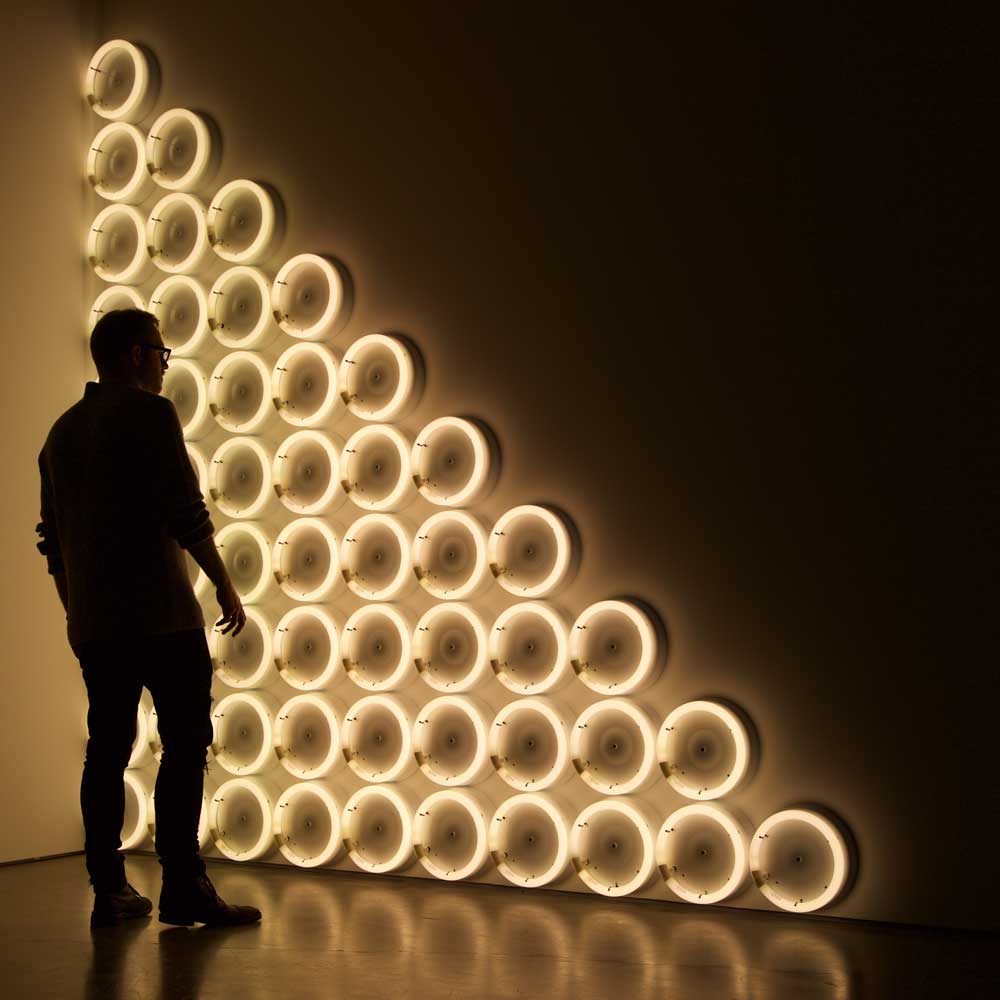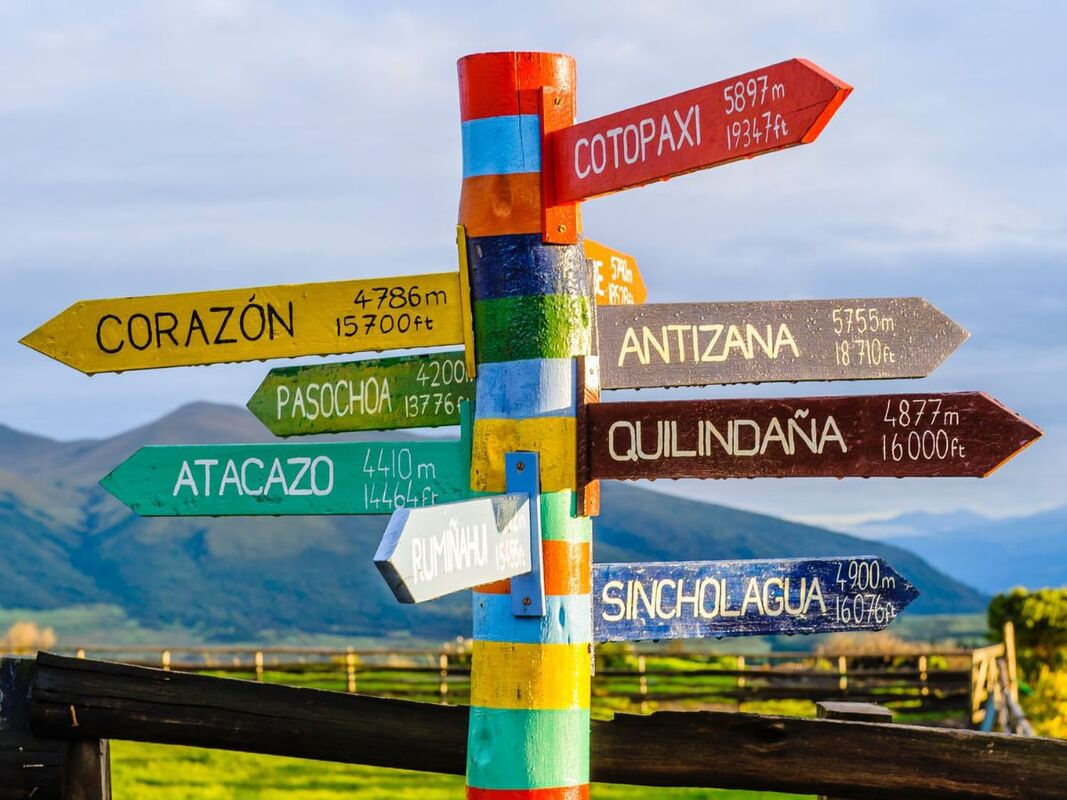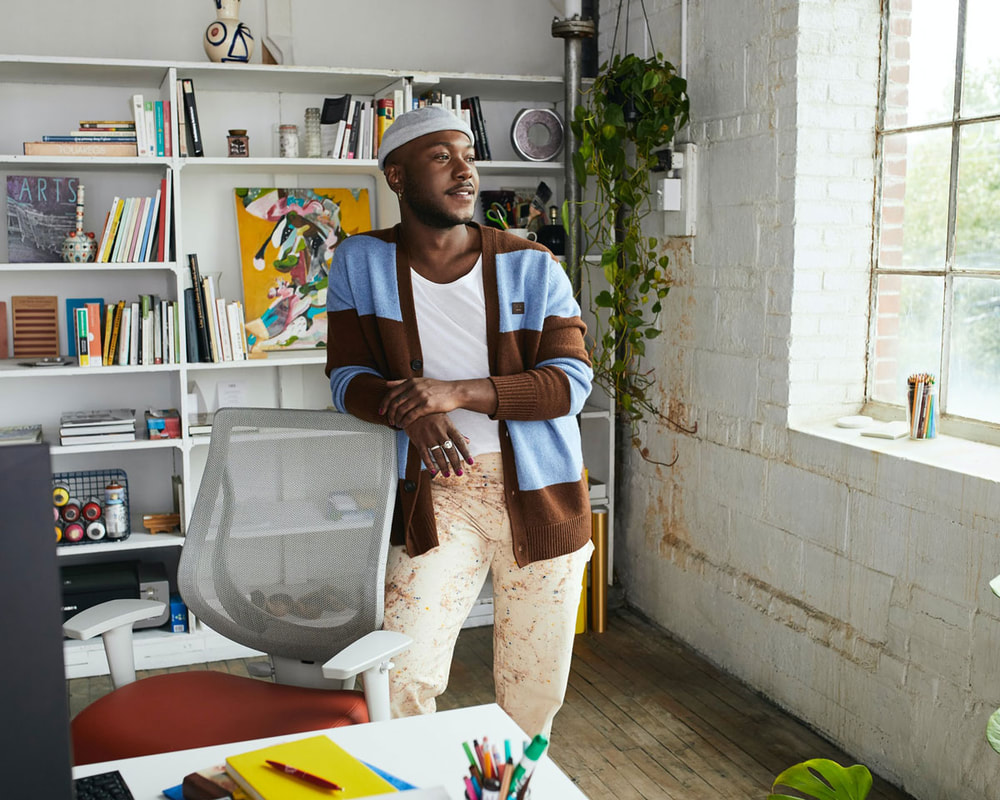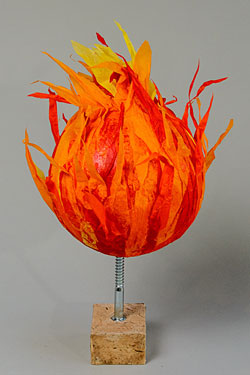 Planet Earth Screwed: Overheated. (Courtesy of Phyllis Thelen) Planet Earth Screwed: Overheated. (Courtesy of Phyllis Thelen) I just attended a solo exhibition of new work by the artist Phyllis Thelen, who turned 95 this year. While she has been an exhibiting artist all her life, her first solo museum show happened at the age of 87 and her first retrospective came at the age of 94. She keeps making new work that extends and deepens her central theme: “defending, protecting, and celebrating nature.” Thelen’s success provides a useful reminder for the many mid-career artists who wonder if it too late to find their place, too late to become known or to achieve their goals as an artist. Making art can last you a lifetime, but it happens gradually, in stages, and moving forward takes incredible persistence and resilience. It also means thinking about the overall shape of your career. There are times when you need to get ready, to prepare yourself for visibility. You get better at presenting your work, talking about it, and writing about it. There are times when you need to grow your skills and knowledge. As a result of the pandemic the online courses for artists available now are remarkably diverse in terms of subject matter and quality. You can take advantage of all these offerings. There are times when you need to build your confidence. To keep growing you have to experiment and take risks with your work, and you also face your own fears of failure and fears of success. You can create a supportive community to help you navigate these difficult challenges, so you don’t feel so alone. At nearly every stage of your career, you have to become more comfortable being uncomfortable in order to grow. We can look to our elder artists to see if the struggle is worth it. ~ Mary
Mary Edwards, Ph.D Career & Life Coach for Artists “Left Brain Skills for Right Brained People” Instagram: coachingforartists.maryedwards What does it mean to live a life with art at its center? This question comes from a remarkable retrospective of the abstract painter Joan Mitchell’s work at the San Francisco Museum of Modern Art. Katy Siegel, co-curator of the exhibition, describes Mitchell as “a woman who managed to make art the center of her life and refused to let anyone tell her what being a woman meant.” In order to create a full life with art at its center, Mitchell needed to expand the center itself. She incorporated into her art many different sources of inspiration: poetry, music, landscape, urban environments, her natural surroundings, as well as the influence of the iconic painters Cezanne, Van Gogh, and Matisse. She expanded the center by deepening the purpose of her art, demonstrating how painting could simultaneously express physical experience and complex emotions. To live with art at the center of your life takes courage and passion and confidence. In order to make your art center larger, you may have to experiment, to take more risks with your work. If putting art at the center means claiming a larger place in the art world, reach out to mentors for feedback and advice. Build your community of supporters so that you have the confidence to grow. To make art the center of your life you might also have to shift the center. Mitchell needed to move to France in order to free herself from the limitations of the New York art world. Shifting the center may also mean rethinking your own purpose, your media and materials. You may decide to combine the different parts of your art practice, or explore entirely new directions. What steps can you take now to put art at the center of your life? ~ Mary
Mary Edwards, Ph.D Career & Life Coach for Artists “Left Brain Skills for Right Brained People” Instagram: coachingforartists.maryedwards Women artists think they need to do everything and do everything well. You take on the troubles of friends and family and rarely say no to a request for help. Even though you are committed to your art practice you let others’ needs replace your own. We know that artists require space and time and freedom. Yet the painters Elizabeth Murray and Kara Walker were able to have children as well as remarkable art careers. Agnes Martin eventually had to retreat into her singular self in order to produce great art. These artists teach us that there is no one model for combining creativity with a full personal life. Be clear with yourself about your needs, and own them without apology. Let the people in your life know what you’re trying to accomplish, and then talk with them honestly about the support you need. Start making conscious choices about how you manage your time. An artist I know recently decided to hide her cell phone in the garage for long periods every day so that it didn’t constantly distract her. Another decided to “unsubscribe” to a number of commitments that no longer made sense to him. Sometimes your choices are symbolic. A young artist in Vermont, eight months pregnant with her first child, set up a corner of her living room as a new studio space, even though it would be months before she was ready to work there. Her choice gave her a daily visual reminder of the future she intended to create. To shape a life and career as an artist means that you sometimes have to say no to other demands, even though you may disappoint people you care about. Be consistent, be clear, be kind, then let go of the guilt and claim yourself. ~ Mary
Mary Edwards, Ph.D Career & Life Coach for Artists “Left Brain Skills for Right Brained People” Instagram: coachingforartists.maryedwards I recently had the opportunity to teach a career skills workshop for artists at Larkin Street Youth Services in San Francisco. This remarkable organization offers support and educational resources for recently homeless young people. Their mission incorporates the Dalai Lama’s maxim: “When educating the minds of our youth, we must not forget to educate their hearts.”
The workshop took place in their collective art studio, an environment created to support these young artists, who were mostly musicians. The studio was warm and welcoming, filled with comfortable chairs and couches, cubbyhole lockers for each person’s valuables, sophisticated electronic keyboards, musical instruments, computers and many snacks. The studio provided a physically, emotionally and mentally nurturing place where these artists could grow. It gave the recently homeless a home for their art practice. During the workshop we focused on a checklist of career skills for creative people, but it seemed to me that they already had what many artists need. They worked in an environment that surrounded them with the knowledge that they mattered. They could believe in themselves as artists while they worked on their art, protected from the chaos of the streets. The mind and the heart are interwoven in all of us, but this is especially true of creative people. If you are fortunate enough to have your own studio, make sure that it nurtures you. Even if your art space is just a corner of a bedroom or part of a garage, it should surround you with a sense of privacy and calm, safety and support. Organize it so that you bring everything you need together in one place, and make it a place you want to be. Your art space is an extension of your artist self, the foundation for your practice. ~ Mary Mary Edwards, Ph.D Career & Life Coach for Artists “Left Brain Skills for Right Brained People” Instagram: coachingforartists.maryedwards 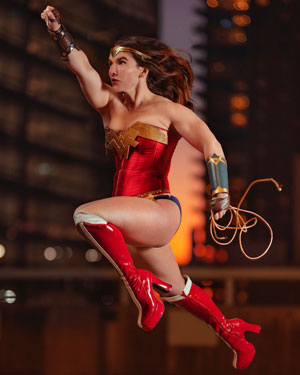 Many excellent artists get stuck because they doubt themselves and their work. Overwhelmed by the competition, they think that everyone else is more accomplished and that success comes through luck or by some magic formula. I listen to their worries every day: “but I don’t have an art degree . . . I don’t know anyone in the art world . . . my work doesn’t fit current trends.” While honest doubts will get you further than a raging ego, remember that your belief in yourself is both a powerful strength and a necessary first step in an art career. Gender roles have created two familiar stereotypes. Many women artists keep apologizing for their work, while their male counterparts never pause in their self-promotion long enough to listen to feedback. Both extremes get in the way of building real confidence. Confidence is grounded in an active, consistent art practice. You cannot believe in your work unless you are doing it, unless you are immersed in it every day or every week. Being deeply involved in art making is the foundation for everything else. The next step is to take your work out of hiding and let it breathe in the world. This might mean entering your work in juried shows, or inviting people for a studio visit, or sharing new work with artist friends. Choose whatever feels like a safe place for you, and welcome the views of others you trust. Objective feedback helps you understand your own art: its strengths and areas for growth. Never apologize for your work, for your effort, for the fact that you are an artist. Instead of discounting the praise you receive, accept it gracefully, as something you deserve. Practice talking confidently about your work and soon you’ll convince yourself. ~ Mary Mary Edwards, Ph.D Career & Life Coach for Artists “Left Brain Skills for Right Brained People” Instagram: coachingforartists.maryedwards 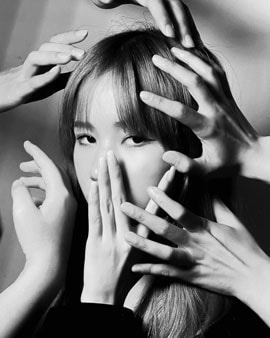 Most artists are sensitive people, attune to emotions and perceptions that others miss. You see more, you feel more, you absorb more of the vibrations around you. Such permeable boundaries make you a better artist, but may also keep you stuck in your art career. You listen to negative voices in your head instead of saying what’s on your mind. Your own sensitivity makes you exaggerate the risks of speaking up. Remember, people don’t actually know what you need unless you tell them, and you cannot predict their response. Relationships break down around communication issues all the time, and the same thing can happen to an art career. Instead of imagining difficulties, speak up and start a conversation. If you’re not satisfied with your gallery’s efforts, stop worrying and talk to the owner. When you’ve been unhappy with your critique group for years, start suggesting how the group might be improved. Instead of envying the successful artists in your network, talk to those who might help you take the next steps in your own career. When the voices in your head become worries that are holding you back, turn them into conversations with real people. Plan what you want to say, be ready to listen, and don’t give up too soon. When you speak up and ask for what you need, you don’t always get what you want. People say no, or not right now, or ignore your request. Funny thing, though, you feel relief when you speak up. You finally “get it off your mind” so that you can let go and move on to other possibilities. The more you practice speaking up for yourself, the easier it gets. Remember, your voice as an artist includes your actual voice, asking for what you need and deserve. ~ Mary Mary Edwards, Ph.D Career & Life Coach for Artists “Left Brain Skills for Right Brained People” Instagram: coachingforartists.maryedwards 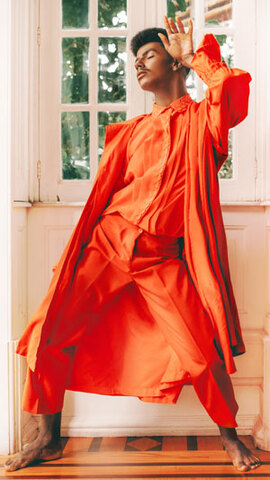 As the art world begins to open up again, it is time to think about your place within it. If that suggestion makes you squirm, you are not alone. The introverts among us may be bidding a sad farewell to 2020, when it was possible to hide out without apology. The artist Nancy Nichols calls this phenomenon “pandemic withdrawal” and I think it is a real thing. If you have put your art career on hold in the last year, use this transition to consider the doors you might be ready to open, both within yourself and out into the world. I like the image of a swinging door because it moves in two directions. When you open doors within yourself you create momentum that can help you break free. Internal doors can be the hardest to open, because your personal demons lurk behind them. Sometimes you find resentments and insecurities behind the door. Sometimes there are discouraging voices from the past, or even real trauma. Always there are fears—fears of success and fears of failure. Closed doors are most frightening because they represent the unknown. Gently push that door open and see what you find. Give your fears a name and even a face, so that you can stare them down. You may be surprised to discover that you’re stronger, more resilient now and ready to take risks. Let the rhythm of the swinging door move you out. You already know the steps you want to take, since they are alive in your mind or written on notes that you’ve kept for years. Gradually leave your nest and make your way into the new art world, which has never been so diverse and dynamic, so open to new ideas and new voices, like your own. ~ Mary Mary Edwards, Ph.D Career & Life Coach for Artists “Left Brain Skills for Right Brained People” Instagram: coachingforartists.maryedwards 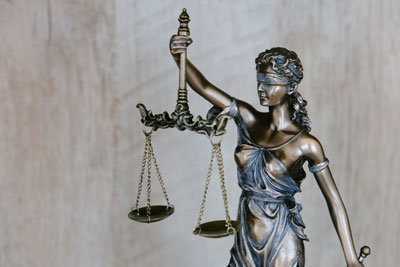 I am hearing from artists concerned about the current focus on social and political art, often by artists of color. Since their own work doesn’t fit the trend, they feel that it isn’t fair. There is a strange assumption here, as well as some historical amnesia. The art world isn’t fair now, and never was. It reflects and responds to contemporary issues, especially during volatile times. For example, art about the pandemic is now making its way into galleries and museums. If you think the art world used to be fair, remember that women artists were ignored or marginalized for decades, seen as less important than their male colleagues. Similarly, many excellent artists of color received no attention until recent political events made their work suddenly relevant. A similar shift happened in the 1970s in academia. As a result of the women’s rights movement, white males with Ph.D.s from Ivy League universities suddenly began to lose jobs to equally well-qualified women. These men were outraged and claimed that it wasn’t “fair.” Their shock was real, since it was the first time they had experienced what it felt like to be marginalized. When you start to feel such resentments, dig deeper into the lives of artists who are currently receiving so much attention. They have always been there. While Amy Sherald’s portrait of Michele Obama catapulted her to fame in 2018, she had been making remarkable portraits of Black Americans for two decades. She paid her dues, showing her work at the Baltimore City Hall and alternative art spaces, waiting tables to support herself until she was 38. Sherald is now represented by Hauser & Wirth. So, if you are feeling invisible now, don’t give up. Let these wonderful artists encourage you and give you hope. ~ Mary Mary Edwards, Ph.D Career & Life Coach for Artists “Left Brain Skills for Right Brained People” Instagram: coachingforartists.maryedwards 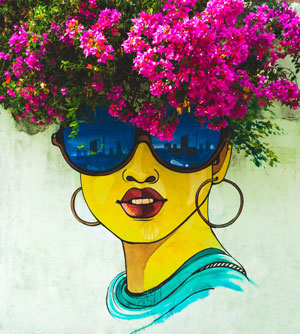 Artists have difficulty evaluating their own work. They often ask, is my work good enough for a gallery? Is it good enough for a museum? How do I know? This question cannot be answered in the abstract, since a specific gallery or museum would have to look at your work and consider it from their own point of view. But asking, "is my art good enough?" may help you see the relationship between your intentions and the art you are creating. Think about what you say when people ask you to describe your work. Do you talk about the ideas that inspired it, the emotions behind it, the aesthetic problems or social issues you address? You may not be articulate, but you do have a sense of what your work is all about. Then evaluate your bodies of work to see how well the art reveals your intentions. Would a viewer be able to see or sense what you’re trying to say, without the need for words? In a portrait, for example, how well does the spirit of your subject shine through? In a realistic landscape, does it seem as though we could enter the painting and walk along that path? Does your abstract sculpture reflect or challenge our notions of what the human body looks like? In a study of color and light, do we see the world through a different lens? Does your work comment on, deepen or change our perceptions of ordinary reality? Your work is "good enough" when it expresses your intentions, and reveals them to others without the need for explanations. Your work is ready when it speaks clearly in your own voice, and says what you want to say. ~ Mary Mary Edwards, Ph.D Career & Life Coach for Artists “Left Brain Skills for Right Brained People” Instagram: coachingforartists.maryedwards  What does it mean for an artist to present “a coherent body of work?” The phrase usually comes up in a traditional gallery setting, where people expect an artist’s work to fill a room, and be clearly recognizable as the work of one person. How do you know if your work is coherent? The whole idea might seem like a narrow straightjacket, where you are condemned to keep on doing what you’ve been doing, forever. In fact, coherence is a larger and more generative concept. It means that the parts of your work fit together in a natural way, unified by a consistent vision, style, or subject matter. If you’re an emerging artist, don’t think of coherence as a goal. Trust in your own creativity, and let yourself experiment and grow. Play with new ideas and new materials. After you have a substantial body of work, step back and try to see it as a whole, from a distance. Your work might be about a larger subject, like the natural world or personal identity or immigration. Your work’s coherence might be provided though a consistent technique: how you use color and composition, or the play of light and shadow. Coherence may come in the form of a political or social theme, or an aesthetic idea, or even the use of an unusual material. When looking at your art, ask yourself: how did my new work grow out of the old? Is it a departure or a reaction to what went before? Even if you reject some older works as failures, consider the possibility that they were early versions of current successes. As you look for your own fingerprints you will begin to see how your work has grown, and how it all fits together. ~ Mary Mary Edwards, Ph.D Career & Life Coach for Artists “Left Brain Skills for Right Brained People” Instagram: coachingforartists.maryedwards 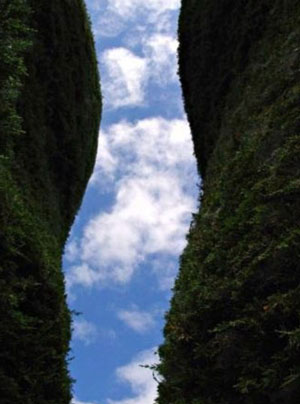 When artists are stuck, I often ask: “what do you need?” This question can be answered quickly (“more time!” “more money!”) but if you let yourself go deeper you may be surprised to discover that you need to find another way to nurture your creative spirit. You need to create negative space. Many artists seek inspiration by looking at art online. They spend hours following other artists on Instagram. They take advice from people (like me) and attend virtual art fairs or virtual gallery and museum shows. But when you are struggling to find your own voice, this kind of research can backfire. You imagine that everyone else is more confident or successful than you are. Everyone else is creating art that is socially or politically relevant, so you think your art doesn’t matter. Gradually you begin to lose touch with your own best instincts. So when you’re struggling to create, build in negative space. Allow empty or blank areas between your busy daily life and your art practice. Make a real transition, instead of thinking you can flip a switch. Give yourself not just time but also the mental and emotional space to work. Shut off the noise from the internet and the TV. Stop filling up your art time with other artists and “art activities” and seek your own silence. Allow yourself to touch your materials and tools, without a plan in mind. Be patient and present in your own art space. Look at your work, certainly, but let yourself slowly discover what is inside you. Sometimes you must first get comfortable with a blank canvas or an empty wall. Get comfortable with doing nothing for awhile. Negative space is the seemingly empty space between things. It allows your next inspiration to come. ~ Mary Mary Edwards, Ph.D Career & Life Coach for Artists “Left Brain Skills for Right Brained People” Instagram: coachingforartists.maryedwards 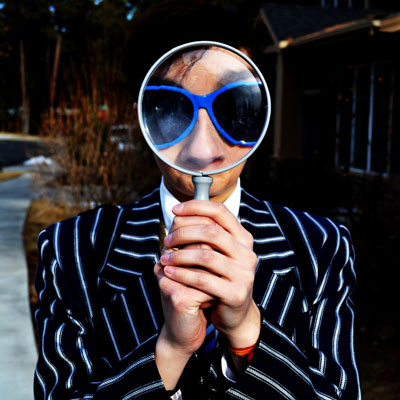 It has never been more important to understand how your audience searches for your art. Many years ago I discovered that creative people were searching for “life coaching“ because they didn’t know that there were career coaches for artists. When I changed my website to include “career & life coaching” for artists, my business expanded quickly. Try this test. Think about your ideal customer (who doesn’t know your name), and search as they would for your kind of art. Use search terms that describe your category, such as “Wyoming landscape art” or “botanical prints.” Look at the first few pages of the google listings to see where your website appears. Don’t be surprised if you are invisible. This usually means that you need to have better SEO (search engine optimization) built into your website. First, create links to organizations you belong to. For example, if you are a portrait artist, include a link to the Portrait Society of America; if you are a landscape painter, link to Oil Painters of America. If you sell on Etsy, be sure to provide a link to your Etsy site. These links to larger organizations will make you more visible. You’ll also want to include appropriate key words and phrases into the language you use to describe yourself and your work. If you are trying to sell those botanical prints, you might say that you have “affordable botanical prints for sale.” That’s what someone might search for. If you need help discovering how people are searching for art now, you can use one of the free keyword research tools, such as SEMRush. These are just first steps. Talk to your technical support person about how to build search terms into the overall structure of your site. ~ Mary Mary Edwards, Ph.D Career & Life Coach for Artists “Left Brain Skills for Right Brained People” Instagram: coachingforartists.maryedwards 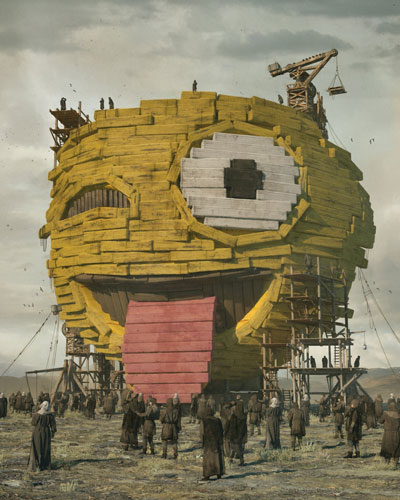 Crypto Art is the new new thing in the digital art world. It came from the realm of finance, where bitcoins rule. Recently works by the digital artist Beeple sold for 69.3 million in an online auction at Christie’s. A headline in last Sunday’s New York Times tells us why this all started during a pandemic: “Bored Rich People Spend Money.” So what is Crypto Art? While a digital image might be viewed as a jpeg, it becomes crypto art when assigned an NFT, which stands for non-fungible token. These tokens are not the art itself, but a recorded certificate of who owns it. It is as though you spent millions of dollars and all you got was the receipt (I can see the T-shirt now). NFTs can be bought and sold in new digital marketplaces modeled on traditional art venues. There are crypto art galleries (called gateways), a Museum of Crypto Art, a Museum of NFT Art, and even a CryptoArt Magazine. The first Crypto Art Exhibition will happen in Beijing at the end of March. Nifty Gateway, where Beeple sells his art, considers itself “The Premier Marketplace for Rare Digital Artwork.” This branding combines the language of nostalgia (“nifty” is a word you might hear from an old guy in a hardware store) with the terminology of the high-end collectibles market. The term “rare digital artwork” is an oxymoron for the ages. Beeple’s art career also builds the new upon the old. The works he is now selling as Crypto Art are part of a digital series called “Everydays” that he has been creating (every day) since 2007. The quality and originality of the work reveal a remarkable artist dedicated to his craft and making serious money in the brave new world of art. ~ Mary Mary Edwards, Ph.D Career & Life Coach for Artists “Left Brain Skills for Right Brained People” Instagram: coachingforartists.maryedwards  As a Career & Life Coach for Artists, I’m often asked: What is coaching for creative people all about? How does it work? How can coaching help? What skills do artists need to bring to the coaching relationship? Sometimes artists begin the coaching process with clear goals, but often need help figuring out where they want to go and how to get there. Be honest with your coach in describing your hopes and dreams and doubts. Be patient with yourself as you discover your path. During the coaching process artists learn new skills and develop new habits. Sometimes this means learning “left brain skills” like planning, organizing, and managing time. Artists who want to get better at marketing need old fashioned skills like talking and writing about their work, but also need to create an effective “digital presence” in the virtual art world. Established artists often have to think bigger in order to reach the next level in their careers. Coaching is a structure of accountability. During each session you’ll identify a series of small steps to take before you meet again. Coaching works because you have a partner, an experienced professional who supports you and cares about your progress. It might take a few weeks or months, but you’ll begin to find new ways of thinking about your art practice and career. Coaching helps you understand that you’re not alone. You’ll find out that you’re not the only artist who is technologically challenged, or hesitant to ask for help from their network, or confused about how to navigate the opportunities available now. A good coach listens more than they talk. They ask good questions. They help you think. The process is working when you begin to discover what you always knew. ~ Mary Mary Edwards, Ph.D Career & Life Coach for Artists “Left Brain Skills for Right Brained People” Instagram: coachingforartists.maryedwards  People are now saying that 2020 was a “catalyst for digital innovation” in the art world. One example of this is 8-bridges, a new platform designed to promote a vibrant gallery scene in the San Francisco Bay Area. “Missions and Ambitions,” their recent virtual event, featured well-known San Francisco galleries, auction houses, and museum curators talking to each other. There is much to learn from these conversations, but what strikes me is how they combine the new and the old. While the platform is digital, it is based on a network of relationships established over two decades. These San Francisco art leaders and artists know each other because they have grown up together. If you look back to the early 2000s, these now-famous galleries were just starting out. The artists they show had recently graduated from Bay Area art institutions, like CCA, the SF Art Institute, Mills College, etc. Moreover, many were recipients or at least finalists for SF-MOMA’s prestigious SECA Award. These privileged beginnings demonstrate the power of institutional support for artists. Yet it is important to remember that the quality of the art itself has made these artists’ careers last over time. As Claudia Altman-Siegel explains it, artists are strong when they are “reporting from a specific place” and yet the art itself is able to stand on its own. While place sometimes means geography, the meaning here is that an artist’s work comes from an idea, a point of view, a story that needs to be told. And their art fully incorporates and expresses it. Use this lens to consider your own work. What is the place you come from? How would you describe it? Does your art express that place so fully that it lives on its own? ~ Mary Mary Edwards, Ph.D Career & Life Coach for Artists “Left Brain Skills for Right Brained People” Instagram: coachingforartists.maryedwards 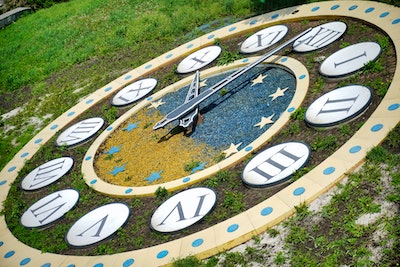 In my last blog post I suggested that the arrival of a new year gave artists the opportunity to find new ways of working. This often means building structure into your art practice. This is a challenge because most systems of organization feel alien to artists. It is difficult to fit a creative life into a spreadsheet. If linear processes tend to paralyze you, try to find another way to get organized. Instead of making a list, choose a mantra. This is a word or phrase, and sometimes an image, that guides your behavior through the ups and downs of a day or a week. My own mantra right now is: “Shape the Day, Every Day” These five words are on post-its all over my house and on my screens. Every morning my mantra asks me to think about the overall shape of my day. When I am stuck, I return to this advice. Sometimes “shape the day” means doing all the hard work first. On other days it means finding inspiration before I begin. The phrase reminds me that I am in charge of how my day unfolds, no matter what is going on in the world or in my own life. How you shape your day depends on your commitments, of course. You have responsibilities to others, as well as regular work time. But when you put yourself in charge of shaping the day, you acknowledge your own needs. You may need comfort, stimulation, or connection, or simply time for yourself. Borrow my mantra or find a phrase that inspires you. Keep it visible in your studio or other workspace. After a few weeks, look back to discover what has changed in the rhythm of your days. Welcome to the New Year! ~ Mary Mary Edwards, Ph.D Career & Life Coach for Artists “Left Brain Skills for Right Brained People” Instagram: coachingforartists.maryedwards 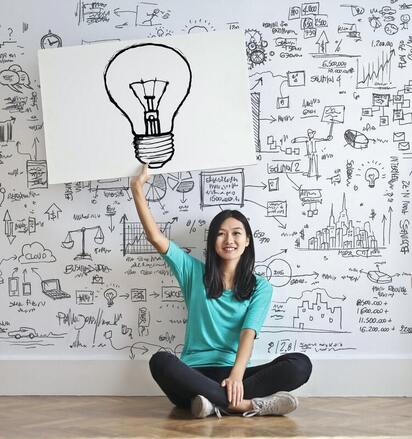 Always a planner, I’m looking ahead to the New Year now and helping artists set goals for 2021. After such a chaotic year, it makes sense to build some structure and planning into your creative life. A good goal stretches you because it helps you figure out what you really want. For example, if you have a strong resume and a coherent body of work, your goal might be to have a solo show at a museum. Articulating that goal clarifies your intentions and makes you think: “how will I do that?” By outlining the steps that will help you reach your goal, you put yourself in motion. You might start to research local and regional museums to find those whose mission and purpose align with your work. You’ll see whether they have submission guidelines on their websites. If not, you’ll go to their staff listing and find the name of an exhibitions coordinator or curator whom you could write or call with questions. But maybe you’re not far along in your career. Your primary goal for 2021 might be to develop a coherent body of work. Again the challenge is to figure out the steps you need to take in order to make that happen. You might decide to identify and remove obstacles that prevent you from spending more time on your art. You might need to say NO to less important commitments that drain your energy. You might want to get objective feedback on your work from people you trust. Try to understand what has to change in your daily life in order for your art to grow. Most important, don’t hide your goals in a folder on your desktop. Write them down and keep them visible in your creative space. Happy New Year! ~ Mary Mary Edwards, Ph.D Career & Life Coach for Artists “Left Brain Skills for Right Brained People” Instagram: coachingforartists.maryedwards 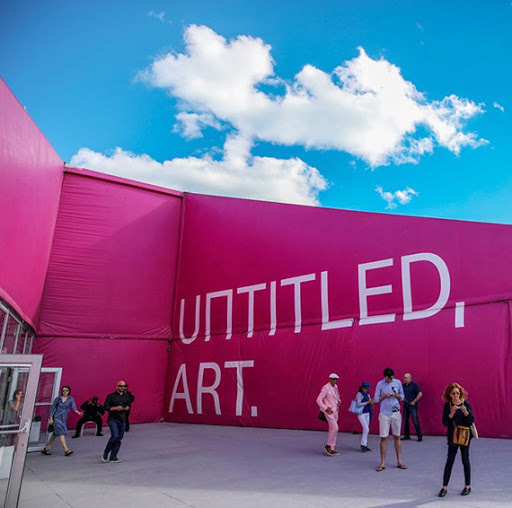 If you haven’t visited an art fair lately, you have another opportunity this week. UNTITLED, ART Miami Beach will be held from December 2 through December 6, 2020. Since it happens both live and online, it’s called a hybrid art fair. UNTITLED, ART includes not just galleries but also artist-run exhibition spaces and nonprofit art organizations. Their list is fully international, including galleries in Cape Town, Buenos Aires, London, and Johannesburg, plus U.S. venues in Los Angeles, New York, and Dallas. Use your visit to learn about what’s going on in the Big Art World. There are live-streamed panels where collectors, curators, museum directors and art advisors discuss trends. You can visit gallery viewing rooms and ask questions of the exhibitors. Since the primary purpose of the fair is to sell art, you will be able to see prices for a wide range of art. For an emerging artist, the fair provides an introduction to how the top tier of the art world operates. Pick several galleries and nonprofit spaces that appeal to you and get to know them. Go to their websites to see the artists they represent, and then focus on the artists they feature at the fair. For artists who inspire you, look at their resumes to see how they got where they are today. What can you learn about your own career path? Use this opportunity to expand your world. You can attend special events, such as those featuring contemporary Caribbean artists or learn about opportunities such as the Artists in Residence program in the Everglades. You don’t have to wait for the art world to “open up.” Get used to the hybrid model, where art events happen both online and in person, as this seems to be our future. ~ Mary Mary Edwards, Ph.D Career & Life Coach for Artists “Left Brain Skills for Right Brained People” Instagram: coachingforartists.maryedwards 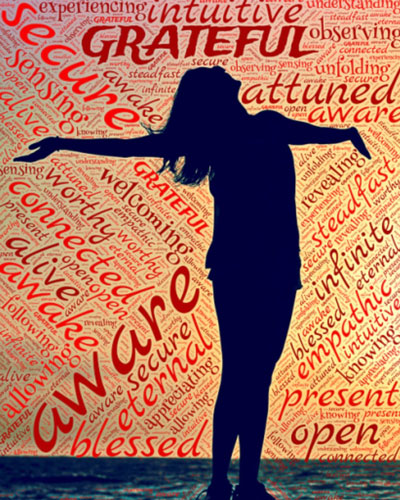 As the Thanksgiving holiday approaches, it is time to consider our lives and ask ourselves: “what am I grateful for?” It has been a very difficult year for everyone, but artists have been challenged in unique ways. The art world has gone virtual, many opportunities have been put on hold, and the uncertain economy has put creative organizations at risk. It may be hard to feel grateful right now. You have to find a way to let go of frustrations and acknowledge what is still positive or at least hopeful in your world. Believe it or not, there is a field of study called the Science of Gratitude. Researchers say that expressing your gratitude can make you happier. When you express gratitude you pass on positive thoughts and feelings to create what I call a circle of gratitude. You might be grateful for the people who have helped you get through difficult times. You might be grateful for groups or organizations that offered resources to keep you going. You might be grateful for your own strengths and talents. Think of what you are genuinely grateful for, and then put those feelings into words. Say it out loud or write it down. Give specific examples. First make it clear to yourself what you are grateful for, and then see what your examples have in common. For example, I’m grateful for:
After you discover what you are grateful for, find a way to tell the person or organization or even yourself. Pay it forward to inspire others to do the same. You are creating a circle of gratitude that nurtures and sustains itself. ~ Mary Mary Edwards, Ph.D Career & Life Coach for Artists “Left Brain Skills for Right Brained People” Instagram: coachingforartists.maryedwards 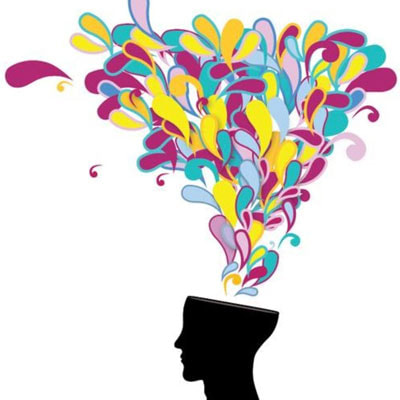 For most of us these last months of 2020 will be full of challenges. We struggle to stay creative as we face a difficult and uncertain election process, feel the weather becoming colder or wetter as we’re trapped inside, and wonder whether art-making really makes a difference in the world. In my last blog post I described how the artist Constance Hockaday managed to create art that speaks directly to this political moment. She created a platform where 50 diverse artists spoke as president of the U.S. in their own voices. Hockaday’s process was just as transformative as her content. When the pandemic closed down her original site, she reimagined the project to work even better in the virtual art world. This is the core of what artists do. In your art practice you give form to an idea or a feeling. You capture an impression in clay or on canvas or in a photograph. You take a hard look at the world as it is and decide to make something new. Choosing to create art during these turbulent times is a hopeful thing to do. Even when your art is not about social issues, it takes freedom of thought and positive energy and courage to make it. Don’t shut yourself down by wondering whether your art matters, whether your voice will make a difference. Your ability to create is a powerful resource that helps all of us fight back against uncertainty and fear. Nurture your creative self. Keep it alive by making art, by teaching art, by encouraging other artists, by building community. What you do every day matters. Fill your mind and heart and spirit with your own creativity. Cherish your ability to see the world as it is while imagining something new. ~ Mary Mary Edwards, Ph.D Career & Life Coach for Artists “Left Brain Skills for Right Brained People” Instagram: coachingforartists.maryedwards Constance Hockaday’s “Artists-in-Presidents: Fireside Chats for 2020” is a remarkable example of transformative art. While the project looks like it was designed for this moment, it was originally supposed to happen on the USS Potomac, FDR’s retired Presidential Yacht, docked in Oakland.
Hockaday envisioned an immersive site-specific performance space that would feel “both like a press conference for the working class and a raucous wedding reception.” The voices of fifty artists would be piped through loud speakers as they responded to the question: “what would it be like for you to take on the voice of a leader you’d like to hear?” When the pandemic hit, Hockaday took the fundamental ideas and values of the project and created a virtual art exhibition. The artists were invited to write and record a five-minute presidential address, along with their own presidential portrait. The title, “Artists-in-Presidents,”is Hockaday’s sly smile at the traditional notion of artists-in-residence. Her own portrait is hilarious, as she sits in the oval office morphing into various versions of herself. Hockaday’s process embodies the democratic values that inspired the project. Instead of inviting 50 artists herself, she invited a few and asked each of them to invite other artists, “sort of like a chain letter,” so that the group would represent widely divergent points of view. Their addresses to the nation are being released during the final weeks of the 2020 presidential campaign. Originally intended to be heard by visitors to the USS Potomac, their voices are now reaching a much wider audience. You can see and hear them over the radio, in weekly podcasts, through social media, and in a virtual gallery on her website. Hockaday says that “nobody knows what an equitable world looks like.” Artists-in-Presidents gives us multiple glimpses of that picture. ~ Mary Mary Edwards, Ph.D Career & Life Coach for Artists “Left Brain Skills for Right Brained People” Instagram: coachingforartists.maryedwards In my last blog post I suggested that renewal for artists might come in many different forms. What is challenging right now, for those still sheltering in place, is that the available sources of renewal are still mostly online.
For artists whose inspiration comes from human contact with the living, breathing, touching, feeling world, how do you get what you need? Museums and galleries are slowly reopening, but many changes in the art world will be long lasting. You may have discovered the benefits of participating in the new art world. You enter virtual shows where you don’t need to pay to ship your art. You attend online art fairs and conferences that used to require expensive travel. You connect with new communities of artists, explore museum and gallery exhibitions that were too far away to visit, and even participate in events through virtual art talks and art walks. Now it is time to build these resources into your daily life. If this seems overwhelming, take it slowly and try to control what comes at you. Sign up for email newsletters of art organizations that interest you, so that you receive regular communications. Include one or two national art resources, like Hyperallergic or Artsy or Creative Capital, so that you are in touch with what is going on in the larger art world. Explore and select art publications specific to your medium, like Fiber Art Now or Lensculture or Plein Air Magazine. Schedule a regular time to review these publications so that you incorporate new information into your daily life. It isn’t the same as meeting real people or seeing art in person, but you will stay connected. When the art world opens up again, you’ll be better prepared to benefit from all the resources you’ve discovered. ~ Mary Mary Edwards, Ph.D Career & Life Coach for Artists “Left Brain Skills for Right Brained People” Instagram: coachingforartists.maryedwards We used to look forward to September. You bought new shoes or new clothes or a new backpack, and got ready to go back to school. What we most enjoyed was the sense of renewal, as a new yet familiar cycle was beginning again.
Now many of us go to college on Zoom or struggle to create home classrooms for our kids. August fades into September without much change in our daily lives. The world around us is profoundly disturbing and confusing, and we wonder what we can look forward to. Renewal is a source of inspiration for artists. If you are struggling to find it, you may need to create your own. Here are some questions to get you started. Ask yourself:
Think of renewal as a way to breathe new life into your world. Sometimes it requires dramatic action, but more often the positive changes you seek start with tiny actions that barely register at first. You decide to reconnect with an old friend who tells you about an opportunity you would have missed. You change a habit and discover a different rhythm to your days. You add more structure to your life and find more freedom. Renewal comes in many forms. ~ Mary Mary Edwards, Ph.D Career & Life Coach for Artists “Left Brain Skills for Right Brained People” Instagram: coachingforartists.maryedwards 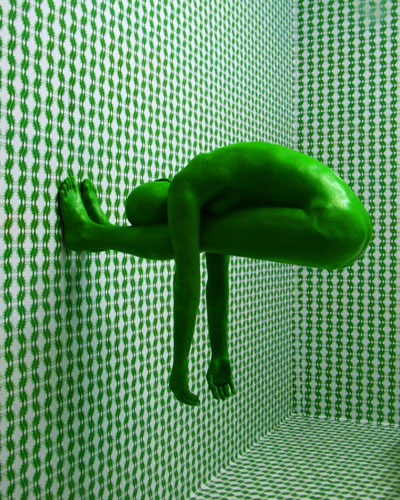 I spent last weekend attending UNTITLED, ART, an international art fair that used to be held in San Francisco, New York, and Miami. This art fair happened on my laptop, of course. UNTITLED, ART Online was a “virtual reality experience” where 40 galleries showcased art and artists. During the opening weekend, you could take a tour with human experts, whose voices and faces enlivened the screen. As they introduced galleries, artists, and themes on one half of the screen, the other half showcased the art in virtual galleries. These curated tours set you up to visit on your own, an experience I call “an art fair for introverts.” Artists who hate talking to strangers at a traditional art fair could click through virtual galleries and remain anonymous. You can visit dozens of galleries in a short amount of time, and learn about the artists they represent. You have easy access to data about a wide range of art: titles, size, materials, dimensions and prices. Organized to make it easy for collectors to buy, the virtual galleries provide a great research tool for artists. Yet something was missing. The virtual galleries provided a simulated experience, a visit to a 3D digital world full of art but empty of people. The sensory overload of the traditional art fair became sensory deprivation in ghostly galleries that look like architectural drawings. The organizers of UNTITLED, ART Online understood what was needed. The images and voices of gallerists and artists brought intelligent organization and vitality to the experience. They gave thematic tours: art celebrating nature and climate change, visits to lesser known galleries, introductions of artists of color from around the world. So while technology made the art fair possible, it took people to bring it to life. ~ Mary Mary Edwards, Ph.D Career & Life Coach for Artists “Left Brain Skills for Right Brained People” Instagram: coachingforartists.maryedwards 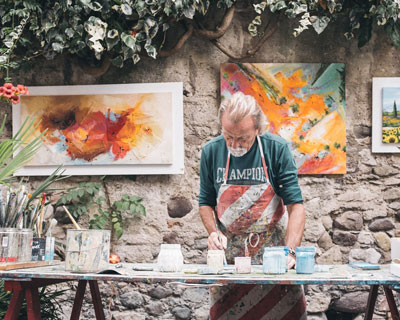 Recently an artist told me: "I’m so worried about what I’m not doing, that I forget what I’ve already done." This anxiety is especially prevalent now. Many artists are stuck, wondering how to justify spending their days developing their own art practice, when so many crises in the news clamor for attention. When you are feeling stressed, give structure and purpose to your creative life. Set simple goals for the week. Look back at what you managed to accomplish yesterday, and give yourself credit. You may have spent a few hours in the studio, even though you haven’t yet completed anything. Maybe you learned a new skill or experimented with a new process. Some artists are learning how to make the transition to the virtual art world, by taking or teaching classes online, or entering virtual exhibitions, or staying connected by participating in virtual art fairs. It is also OK to just focus on developing your art. When the noise of the world intrudes, remember the advice of Julia Cameron in The Artist’s Way. She suggests starting the day with "morning pages," one of her tools for creative recovery. You write out three pages, in longhand, every morning, about what you are thinking and feeling. You don’t critique the pages or even reread them. This habit is especially helpful during stressful times. The morning pages drain your brain of thoughts that might get in the way of making art. Many artists find it helpful to include visual images, sketches or drawings of how you are feeling, rather than just words. Then give yourself permission to be an artist, in any way that comes naturally. Your own creativity will bring positive energy back into a world that badly needs it. ~ Mary Mary Edwards, Ph.D Career & Life Coach for Artists “Left Brain Skills for Right Brained People” Instagram: coachingforartists.maryedwards |
Mary's BlogAs an artist coach, I bring a unique combination of business knowledge, art world experience, and professional coaching skill to my practice. |
